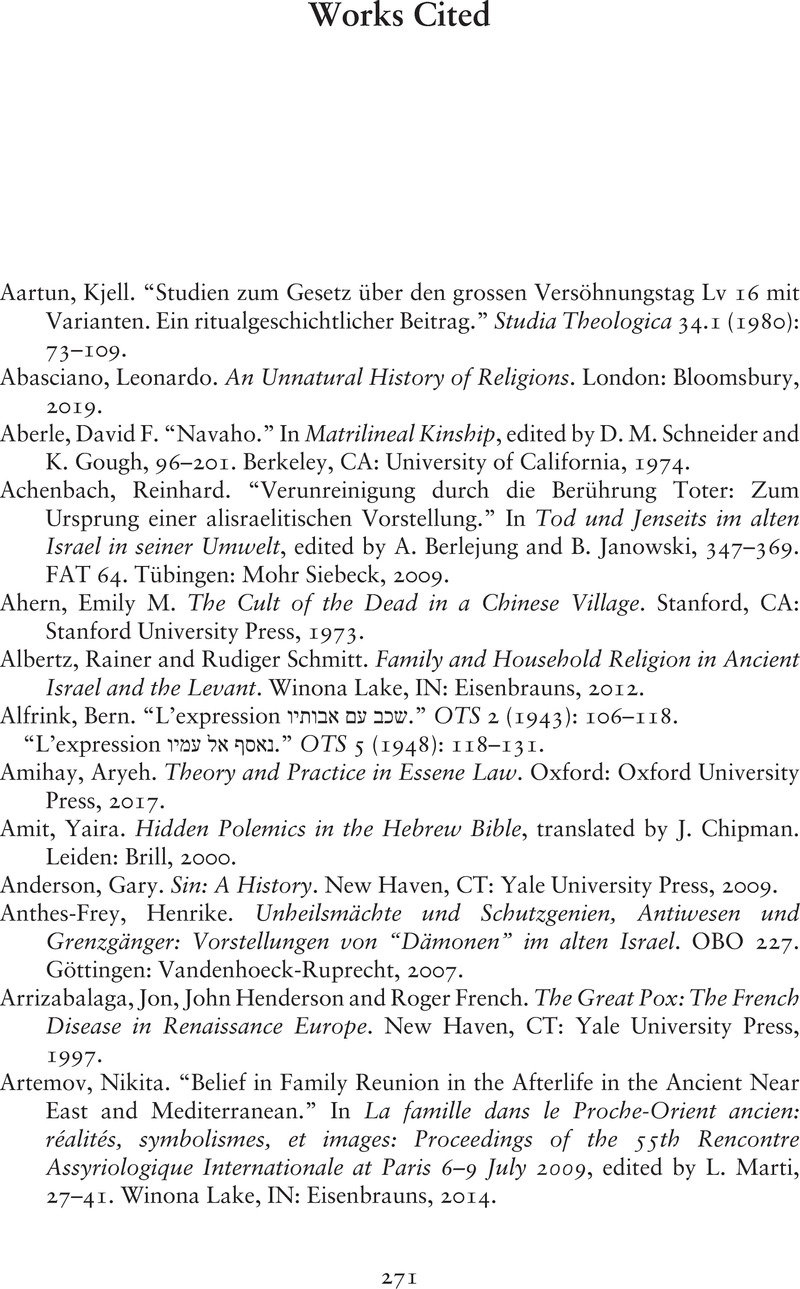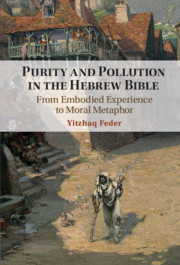Book contents
- Purity and Pollution in the Hebrew Bible
- Purity and Pollution in the Hebrew Bible
- Copyright page
- Contents
- Figures
- Tables
- Preface
- Acknowledgments
- Notes on Transcriptions and Translations
- Abbreviations
- Part I Setting the Stage
- Part II Embodying Pollution through the Life Cycle
- Part III Images, Codes and Discourse
- Works Cited
- Index of Biblical Sources
- Index of Selected Ancient Near Eastern Sources
- Index of Rabbinic and Second Temple Literature Sources
- Subject Index
- References
Works Cited
Published online by Cambridge University Press: 24 December 2021
- Purity and Pollution in the Hebrew Bible
- Purity and Pollution in the Hebrew Bible
- Copyright page
- Contents
- Figures
- Tables
- Preface
- Acknowledgments
- Notes on Transcriptions and Translations
- Abbreviations
- Part I Setting the Stage
- Part II Embodying Pollution through the Life Cycle
- Part III Images, Codes and Discourse
- Works Cited
- Index of Biblical Sources
- Index of Selected Ancient Near Eastern Sources
- Index of Rabbinic and Second Temple Literature Sources
- Subject Index
- References
Summary

- Type
- Chapter
- Information
- Purity and Pollution in the Hebrew BibleFrom Embodied Experience to Moral Metaphor, pp. 271 - 300Publisher: Cambridge University PressPrint publication year: 2021

